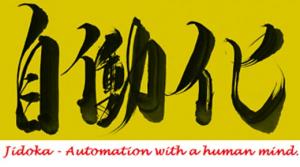All Features

Ryan E. Day
Manufacturing activities have strong ties to economic prosperity. Deloitte’s 2016 Global Manufacturing Competitiveness Index states, “Nations and companies are striving to advance to the next technology frontier and raise their economic well-being.” It’s no surprise that the manufacturing sector is…

Willie L. Carter
What differentiates a lean-thinking organization from a traditional one? Basically, the lean-thinking organization is grounded in the answers to two simple questions: “What do my customers value?” And, “What organization and work processes inside my company will most directly deliver that value?”…

Taran March @ Quality Digest
What must it be like to be Elon Musk? Here’s a guy who can successfully launch the world’s most powerful rocket into space, a feat hitherto reserved for nations with decent budgets. Since 2010 his commercial company, SpaceX, has been ferrying satellites to their permanent homes, and delivering…

Gwendolyn Galsworth
It’s easy enough to make a visual device—or borrow an idea for one from something you saw in a book or at another workplace. Reproducing other people’s ideas (as long as you say thank you) is a positive, and it can keep you going for a while. But not for very long.
Unless you are a natural-born…

Michael Armstrong, Kenneth Klassen
Patients often wait weeks or months for medical appointments. Canada’s Fraser Institute recently reported that Canadians typically wait 10 weeks to see specialists. Long wait times are one reason Canada ranks behind other developed countries in healthcare quality.
In the United States, waits are…

Jun Nakamuro
The sad truth is that the word “engagement” is not very engaging. It’s one of those fluffy, ambiguous terms that have become all too familiar around the business world, like “empowerment” and “respect.” What does engagement really mean, and how do you, as a leader, engage your workforce? The…

Harish Jose
It’s not easy to find topics to write about, and even if I find good topics, it has to pass my threshold level. As I was meditating on this, I started to think about procrastination and ambiguity. So my column today is about the importance of “fuzzy concepts.” I am using the term in a loose sense…

Kevin Meyer
Ever since I visited Italy more than a decade ago my inner geek has had a fascination with traffic engineering. If you’ve visited Italy, or many similar places, you probably know why. Traffic appears chaotic, thanks in part to what appears at first glance to be a lack of signals and other controls…

Steven Brand
The global aerospace and defense (A&D) industry grew by 2.4 percent and generated about $674 billion in 2016, according to a Deloitte 2017 study. California alone was responsible for generating $62 billion a year in revenue in 2014, according to a 2014 California Aerospace Industry Economic…

Markus Grau
Industry 4.0, cyber-physical systems, or the internet of things (IoT): the paradigm shift in the production economy is cheerfully progressing under various names. What they all refer to is the digitalization and networking of production processes and environments. The idea is by no means new. The…

Bruce Hamilton
Speaking at the 2003 Shingo Conference, Guy Briggs, general manager of North American operations for General Motors lamented, “We spent the 1980s ‘counting robots’ before we realized that it’s people that make the difference in our business.”
He was alluding to the thirty-five billion (yes,…

Jim Benson
People are always asking us for help with ways to prioritize. Almost everyone believes prioritization to be an action in and of itself. They ask, “What mechanisms do you use to prioritize?” However, we find most often that prioritization issues, like trust issues, are a symptom of deeper problems…

Harish Jose
I recently read Jordan Ellenberg’s wonderful book, How Not To Be Wrong: The Power of Mathematical Thinking (Penguin Books, 2014). I found the book to be enlightening and a great read. Ellenberg has the rare combination of being knowledgeable and capable of teaching in a humorous and engaging way.…

Trevor Blumenau
How does one define quality in the context of a warehouse? The perfect warehouse is clean, has everything in its place, and is easy to access. Your warehouse looks like the one below, right?
You have a perfectly accurate database table that tells you exactly where everything is, correct? And…

Bonnie Stone
Lean, also known as “lean manufacturing” or “lean production,” focuses on maximizing customer value by removing waste and eliminating defects. Lean tools are about understanding the process, looking for waste, preventing mistakes, and documenting what you did.
Let’s look at five lean tools used…

Tonianne DeMaria
Lean says: Manage flow. Your brain says: My work isn’t linear. My day is filled with interruptions, and so I don’t have the “luxury” of flow. What’s at play here: functional fixedness.
If there is one area where there’s not an obvious transfer of lean principles from manufacturing to knowledge…

Jordan Kraemer
During the past year, I stopped responding to customer surveys, providing user feedback or, mostly, contributing product reviews. Sometimes I feel obligated—even eager—to provide this information. Who doesn’t like being asked his opinion? But, in researching media technologies as an anthropologist…

Kevin Meyer
Changing an organization’s structure seems to be the common knee-jerk response to internal issues. My prior company embarked on a reorganization to eliminate arbitrary site- and function-based structures so that we could align around corporatewide value creation processes.
During the…

Mike Richman
During the Nov. 3, 2017, episode of QDL, we (figuratively) traveled the globe to bring you quality information. Let’s take a closer look:
“‘Made in Japan’ Falls from Grace Amid Scandals, Systematic Flaws in Manufacturing Industry” Kobe Steel is the latest Japanese manufacturer to admit to…

Tonianne DeMaria
Lean says: Map the value stream. Your brain says: I’ve been doing this so long, it’s become second nature to me. The steps are right here—in my head.
What’s at play here: • Illusion of transparency • Curse of knowledge/information imbalance • Status quo thinking • Groupthink/false consensus…

Harish Jose
Today I will look at epistemology at the gemba. Epistemology is the part of philosophy that deals with the theory of knowledge. It tries to answer the questions, “How do we know things, and what are the limits of our knowledge?” I have been learning about epistemology for a while now, and I find…

Bruce Hamilton
The first two books I ever read about lean were Zero Inventories (McGraw-Hill, 1983) by Robert Hall, and Japanese Manufacturing Techniques (Free Press, 1982) by Richard Schonberger. In 1985, these definitive academic works were among just a few sources of information about what was then referred…

Jun Nakamuro
The world first became aware of the Toyota Production System (TPS) when Taiichi Ohno published a book about his groundbreaking efforts at Toyota. It was published in Japan in 1978. The Japanese version of his book wasn’t translated into English until 1988. Because 10 years had passed, this…

Matthew Barsalou
Quality tools can serve many purposes in problem solving. They may be used to assist in decision making, selecting quality improvement projects, and in performing root cause analysis. They provide useful structure to brainstorming sessions, for communicating information, and for sharing ideas with…

jeffdewar
This photo shows the Milky Way (from the Latin via lactea), part of our galaxy as seen from Earth. It’s a barred spiral galaxy, essentially a flat disk of at least 100 billion stars. Our galaxy is just one of about 400 billion in the universe, only three of which can be seen by the naked eye.…